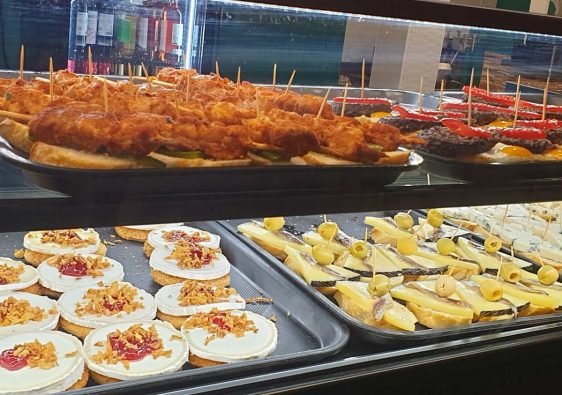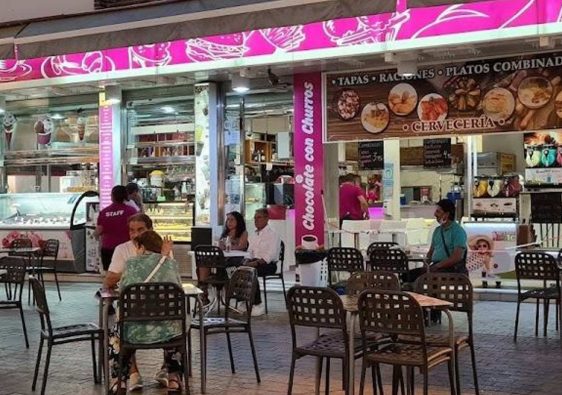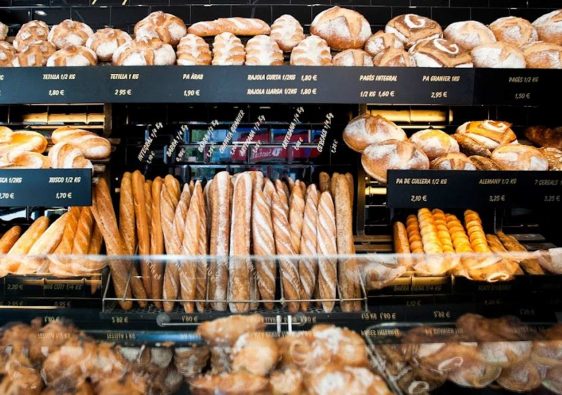Introduction to Viandas de Salamanca
At Viandas de Salamanca, customers can have a unique dining experience. The restaurant’s / takeaway and shop standout qualities, such as authentic Spanish dishes, a great location, and a welcoming atmosphere, make it a must-visit for those who want to taste Spain in Benidorm. Viandas de Salamanca Benidorm can be found halfway down Paseo de la Carretera (Walking Street), you cant really miss it with it’s beautiful window display.
Viandas de Salamanca
Located just 10 minutes from Salamanca is the Hacienda Zorita Organic Farm, which comprises 300 hectares of organic pasture that has been declared a protected natural area, their black pigs roam freely and our Pata Negra Iberian hams are traditionally cured. Viandas has carefully chosen the best Rioja and Duero Valley wines from the century-old wineries and vineyards of Marqués de la Concordia for its more than 30 stores worldwide, ensuring a perfect pairing with our Iberian ham from Salamanca Hacienda Zorita.
Viandas Iberian Bellota Ham
Viandas 100% Iberian Bellota Iberian Black pig Ham is a result of the combination of free-range Iberian pigs fed on acorns and a slow natural curing process, making it a universal symbol of the Mediterranean diet and renowned as one of the 5 gastronomic wonders of the world along with foie gras, caviar, salmon, and truffle.
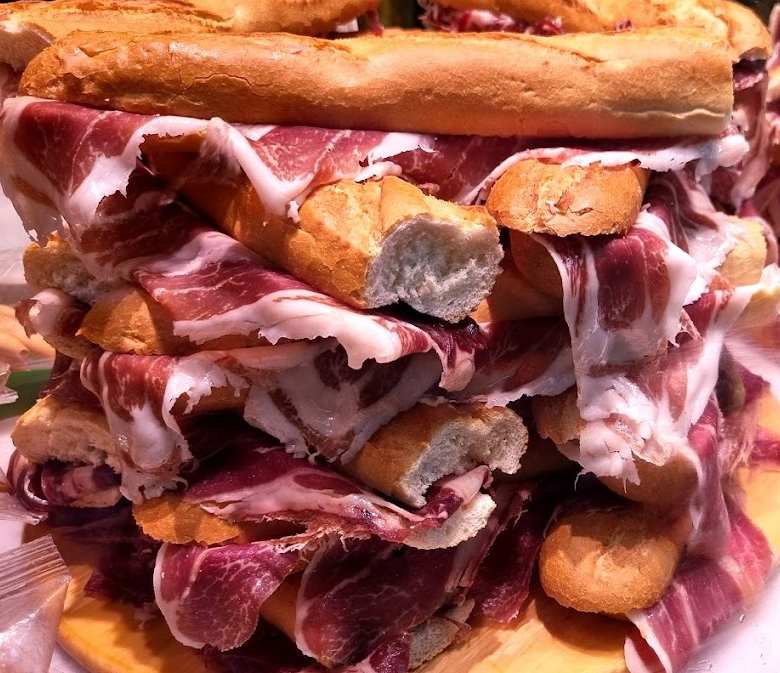
Viandas Cheeses
Viandas cheeses also come from Hacienda Zorita Organic Farm, a cheese factory located in San Pelayo de Guareña (Salamanca), where sustainability and responsible production are top priorities for our award-winning cheeses.
These cheeses are made from the milk of endangered species such as the Verata Goat, the Churra Sheep, and the Zamorano Leonesa donkey (yes donkey).
Raw milk cheese is made from unpasteurized sheep’s milk, giving it a more intense and unique flavour. Our cheese factory at Hacienda Zorita Organic Farm has the valuable support of the Buleza cooperative, which is responsible for the marketing of cheese made with donkey milk.
It is not recommended for pregnant women to consume raw milk cheeses.
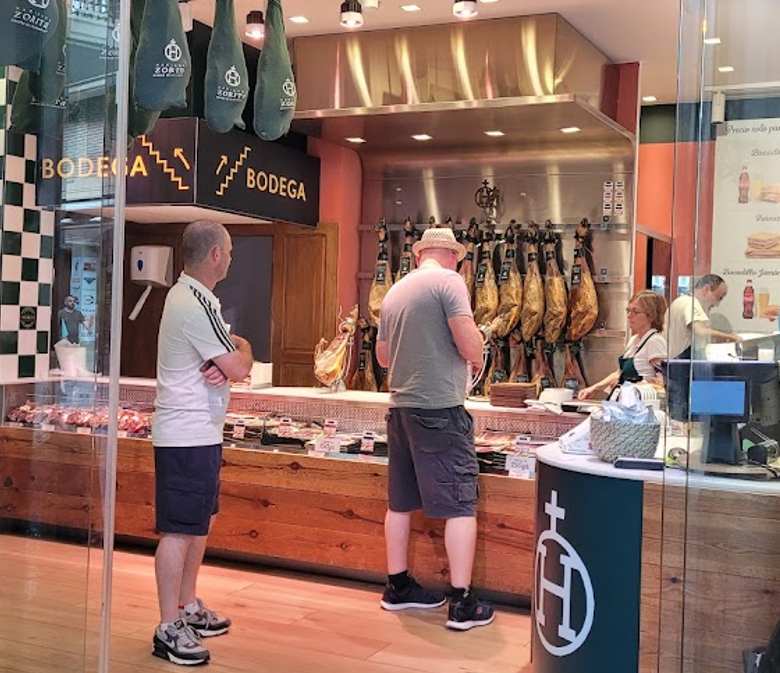
Iberian Black Pig
The Iberico pig has a long history dating back thousands of years, even to the time of cave dwellers who adorned the caves of Spain with their artwork. These pigs were originally wild and have been domesticated over time. The Iberico hog is a large animal with slim legs and a notably long snout. Its black coat is sparsely covered in hair and it also has black hooves, which is why it is often referred to as “pata negra”. This term describes the black hoof that remains on the cured ham, setting it apart from a Serrano ham. These pigs also have a higher fat content, with fatty veins running through their muscles. This, combined with the thick layer of fat on each ham, allows for a longer curing process, resulting in a more complex and intense flavour with a hint of sweetness that is unmatched. It is important to note that not all Iberico pigs are fortunate enough to roam freely in the Spanish countryside and be selected for the coveted Jamon Iberico status. Most Jamon Iberico is made from pigs that live a normal life, eating corn and other feed. While still delicious, it does not compare to the ultimate ham, which is made from pigs that are fed acorns, also known as “bellota”. In fact, Jamon Iberico de Bellota can cost twice as much as a regular Iberico ham. Therefore, it is crucial to distinguish between the two main types of Iberico ham: Jamon Iberico and Jamon Iberico de Bellota. The latter is produced from pigs that are raised on the Dehesa (more on this later) in small family groups until they are ready to be “sacrificed”. The Iberico pigs’ favourite activity is foraging for food in the Dehesa, which includes acorns, herbs, and grasses. This active lifestyle and nutrient-rich diet not only make for happy and well-rounded pigs but also result in marbled meat with natural antioxidants – a crucial element for the extended curing process of the ham.
The Dehesa and its Acorns
The ‘bellota’, also known as the humble acorn, has a significant role in the history of western Spain. Centuries ago, the rulers of the region mandated the creation of oak tree pastures, called the Dehesa, to ensure long-term stability. This forested area serves multiple purposes, providing firewood, shade, cork products, and acorns during the fall and winter, while also serving as grazing land for cattle and sheep during the spring and summer. Despite the pressure to convert the Dehesa into real estate, it remains an intact human-created ecosystem. The resurgence of Iberico ham, which started around 30 years ago, has played a crucial role in preserving this jewel of Spain for future generations, as Iberico pigs rely heavily on acorns for their diet. When these pigs are released onto the Dehesa at 10 months old, they can consume up to 10 kilos of acorns per day, resulting in a weight gain of about 2 pounds of fat per day. After 3-4 months, the pigs have roughly doubled their weight, and it is time for their ‘sacrifice’.
The Curing Process
For generations, the ‘matanza’, also known as the sacrifice, has been a customary event for families. A pig would be sacrificed and the entire family would gather to preserve the meat for the entire year. The family would make chorizo, salchichon, and morcilla sausages on the spot. The best cuts of meat would be set aside to be enjoyed fresh, while the fatty legs would be coated in sea salt and hung to dry in the cool winter air. This ancient process is still practised in some towns, spanning thousands of years. However, in recent times, family-run factories have adopted the same techniques to produce large quantities of cured hams. The hams are left to absorb salt for a few weeks before being hung in factories with open windows, allowing the fresh mountain air to circulate around them.
The Process of Curing Jamon Iberico
Iberico hams undergo a curing process lasting between two to four years, with Iberico Bellota hams taking longer. The extended curing time is made possible by the large amount of fat present in each ham and the antioxidant properties of the Bellota hams’ diets. Throughout the curing process, the hams lose nearly half their weight through the dripping of fat. This transformation continues as the seasons change from winter to spring and summer. The salted ham begins to sweat, leading to chemical changes that result in a drier and better-tasting meat. What makes Iberico unique is its ability to go through this cycle multiple times, resulting in a build-up of complex and volatile molecules that give it a diverse range of flavours. For Bellota hams, the most remarkable change occurs in the fats, as they are broken down during the heating, cooling, salting, and drying process. The antioxidants in the acorns and the unique curing method result in a conversion of saturated fats into healthy mono-unsaturated fats that are high in oleic acid. In fact, only olive oil has a higher concentration of this beneficial acid.
